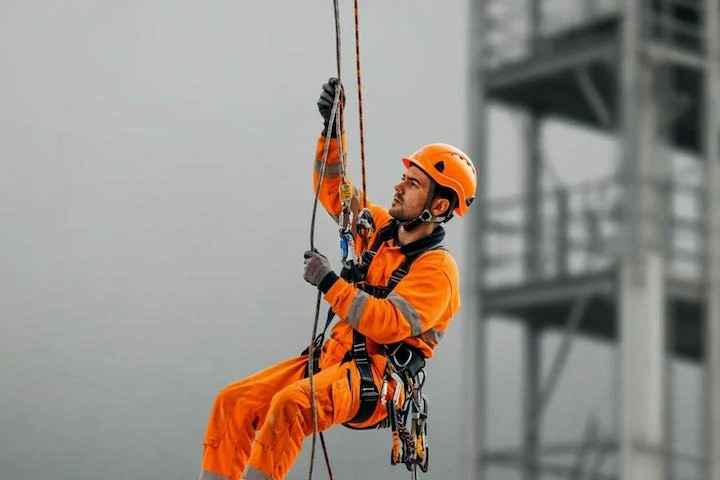Essential Guidelines for Risk Assessments Before Working at Heights
Working at heights remains one of the most hazardous activities in various industries. A comprehensive risk assessment is vital in identifying and mitigating these risks to protect workers from potential accidents. This blog post provides you with essential guidelines on how to effectively assess risks before undertaking any work at height, ensuring compliance with safety regulations and fostering a culture of safety in your workplace.
Why Are Risk Assessments Crucial?
The significance of conducting thorough risk assessments before working at heights cannot be overstated. They serve multiple critical functions:
- Prevention of Accidents: Identifying hazards and implementing control measures can significantly reduce the likelihood of falls or injuries.
- Regulatory Compliance: Many safety regulations require organizations to perform risk assessments, ensuring they meet legal obligations.
- Workplace Safety Culture: Regular risk assessments foster a culture of safety, making employees more aware of their surroundings and encouraging proactive safety behaviors.
Step-by-Step Procedures for Conducting a Risk Assessment
Conducting a risk assessment involves several structured steps:
1. Identify Hazards
Begin by identifying all potential hazards associated with the work at height:
- Environmental Factors: Weather conditions, slippery surfaces, etc.
- Equipment and Tools: Check ladders, scaffolding, and harnesses for potential failures.
- Work Practices: Ensure that the methods used for working at height minimize risk.
2. Evaluate Risks
Once hazards are identified, evaluate the risks associated with each:
- Likelihood: Determine the probability of an accident occurring due to each hazard.
- Severity: Assess the potential consequences of an accident.
Use a risk matrix to rate hazards based on these two factors, categorizing them as low, medium, or high risk.
3. Implement Control Measures
For each identified risk, establish and implement control measures. Follow the hierarchy of controls:
- Elimination: Remove the hazard if possible.
- Substitution: Replace hazardous methods with safer alternatives.
- Engineering Controls: Introduce measures like guardrails or anti-slip surfaces.
- Administrative Controls: Implement policies, such as shift rotations or work schedules.
- Personal Protective Equipment (PPE): Equip workers with essentials like helmets, harnesses, and non-slip footwear.
4. Review and Revise
Regularly review your assessments:
- After an incident has occurred.
- When there are significant changes to work methods or equipment.
- Periodically, to ensure ongoing effectiveness of risk management strategies.
Common Risk Factors When Working at Heights
While each worksite is unique, several common risk factors typically affect activities performed at heights:
- Equipment Failure: Malfunctioning ladders or scaffolding can lead to falls.
- Lack of Training: Workers who are not properly trained may fail to recognize hazards or use equipment incorrectly.
- Environmental Conditions: Wind, rain, and other weather elements can exacerbate risks associated with elevated work.
The Role of Training in Risk Assessment
Proper training is essential for preparing workers to identify and assess hazards effectively:
- Working at Heights Training: Employees should complete certified courses covering safety practices, risk assessment protocols, and emergency procedures.
- Hands-on Drills: Practical exercises help workers experience real-life scenarios and improve hazard recognition skills.
Participants in a Working at Heights Course gain both knowledge and hands-on experience, ensuring they are equipped to make informed safety decisions.
Case Studies: Success Stories in Risk Assessment
To illustrate the effectiveness of risk assessments, consider the following case studies:
- Construction Site in Dublin: After implementing a comprehensive risk assessment protocol, a leading construction firm reduced fall-related incidents by 40% in one year.
- Maintenance Crew in Cork: By adopting a standardized risk assessment process, a maintenance team improved safety compliance and reduced equipment-related injuries.
These success stories emphasize the importance of risk assessments in proactive workplace safety.
Conclusion
Conducting thorough risk assessments is a critical step in ensuring safety when working at heights. These practices not only help prevent workplace accidents but also contribute to regulatory compliance and a sustainable safety culture. For businesses seeking to implement effective risk assessments, investing in Working at Heights Training can lead to significantly safer work environments.
If you're ready to enhance your workplace safety protocols, contact us at [email protected] for more information on our training programs!



 349,500 Offered Certificates
349,500 Offered Certificates
 24/7 Online Training
24/7 Online Training
 Money Back Guarantee
Money Back Guarantee
 Fully Accredited Courses
Fully Accredited Courses
